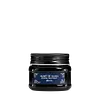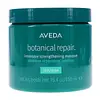What's inside
What's inside
 Key Ingredients
Key Ingredients

 Benefits
Benefits

 Concerns
Concerns

 Ingredients Side-by-side
Ingredients Side-by-side

Water
Skin ConditioningCetearyl Alcohol
EmollientCetyl Alcohol
EmollientBehentrimonium Chloride
PreservativeGlycerin
HumectantCetrimonium Chloride
AntimicrobialBehentrimonium Methosulfate
Behenyl Alcohol
EmollientDicocoyl Pentaerythrityl Distearyl Citrate
EmollientParfum
MaskingPolyglyceryl-10 Pentastearate
Skin ConditioningGlyceryl Stearate
EmollientQuaternium-87
CleansingIsopropyl Alcohol
SolventBenzyl Alcohol
PerfumingMaleic Acid
BufferingSimmondsia Chinensis Seed Oil
EmollientSodium Benzoate
MaskingStearamidopropyl Dimethylamine
EmulsifyingDisodium EDTA
Oryza Sativa Cera
Skin ConditioningThioctamidoethyl Dimethylamine Maleate
AntimicrobialSodium Hydroxide
BufferingPolyglyceryl-3 Polyricinoleate
EmulsifyingSorbitan Isostearate
EmulsifyingAlpha-Isomethyl Ionone
PerfumingLinalool
PerfumingHydrolyzed Adansonia Digitata Seed Extract
Lactic Acid
BufferingCoumarin
PerfumingRetinyl Palmitate
Skin ConditioningHelianthus Annuus Seed Oil
EmollientWater, Cetearyl Alcohol, Cetyl Alcohol, Behentrimonium Chloride, Glycerin, Cetrimonium Chloride, Behentrimonium Methosulfate, Behenyl Alcohol, Dicocoyl Pentaerythrityl Distearyl Citrate, Parfum, Polyglyceryl-10 Pentastearate, Glyceryl Stearate, Quaternium-87, Isopropyl Alcohol, Benzyl Alcohol, Maleic Acid, Simmondsia Chinensis Seed Oil, Sodium Benzoate, Stearamidopropyl Dimethylamine, Disodium EDTA, Oryza Sativa Cera, Thioctamidoethyl Dimethylamine Maleate, Sodium Hydroxide, Polyglyceryl-3 Polyricinoleate, Sorbitan Isostearate, Alpha-Isomethyl Ionone, Linalool, Hydrolyzed Adansonia Digitata Seed Extract, Lactic Acid, Coumarin, Retinyl Palmitate, Helianthus Annuus Seed Oil
Water
Skin ConditioningCetearyl Alcohol
EmollientStearamidopropyl Dimethylamine
EmulsifyingBehentrimonium Methosulfate
Dicetyldimonium Chloride
EmulsifyingPersea Gratissima Oil
Skin ConditioningPlukenetia Volubilis Seed Oil
EmollientCamellia Oleifera Seed Oil
Skin ConditioningButyrospermum Parkii Butter
Skin ConditioningCocos Nucifera Oil
MaskingHelianthus Annuus Seed Oil
EmollientEuphorbia Cerifera Wax
Behenyl/Octyldodecyl Propanediol Citrate Crosspolymer
Skin ConditioningOctyldodecyl Citrate Crosspolymer
HumectantHydroxypropylammonium Gluconate
HumectantHydroxypropylgluconamide
HumectantIsostearyl Ethylimidazolinium Ethosulfate
Tocopherol
AntioxidantPropanediol
SolventLactic Acid
BufferingTricaprylyl Citrate
EmollientHeptyl Undecylenate
EmollientCetyl Hydroxyethylcellulose
Emulsion StabilisingSqualane
EmollientIsopropyl Alcohol
SolventCetrimonium Chloride
AntimicrobialParfum
MaskingAmyl Cinnamal
PerfumingCitral
PerfumingGeraniol
PerfumingCitronellol
PerfumingBenzyl Salicylate
PerfumingBenzyl Benzoate
AntimicrobialLinalool
PerfumingHydroxycitronellal
PerfumingLimonene
PerfumingBenzyl Alcohol
PerfumingTartaric Acid
BufferingSodium Benzoate
MaskingCaprylyl Glycol
EmollientPotassium Sorbate
PreservativePhenoxyethanol
PreservativeWater, Cetearyl Alcohol, Stearamidopropyl Dimethylamine, Behentrimonium Methosulfate, Dicetyldimonium Chloride, Persea Gratissima Oil, Plukenetia Volubilis Seed Oil, Camellia Oleifera Seed Oil, Butyrospermum Parkii Butter, Cocos Nucifera Oil, Helianthus Annuus Seed Oil, Euphorbia Cerifera Wax, Behenyl/Octyldodecyl Propanediol Citrate Crosspolymer, Octyldodecyl Citrate Crosspolymer, Hydroxypropylammonium Gluconate, Hydroxypropylgluconamide, Isostearyl Ethylimidazolinium Ethosulfate, Tocopherol, Propanediol, Lactic Acid, Tricaprylyl Citrate, Heptyl Undecylenate, Cetyl Hydroxyethylcellulose, Squalane, Isopropyl Alcohol, Cetrimonium Chloride, Parfum, Amyl Cinnamal, Citral, Geraniol, Citronellol, Benzyl Salicylate, Benzyl Benzoate, Linalool, Hydroxycitronellal, Limonene, Benzyl Alcohol, Tartaric Acid, Sodium Benzoate, Caprylyl Glycol, Potassium Sorbate, Phenoxyethanol
Ingredients Explained
These ingredients are found in both products.
Ingredients higher up in an ingredient list are typically present in a larger amount.
Behentrimonium Methosulfate is an ammonium salt. It is mainly used to prevent static in haircare products as a surfactant.
Surfactants have differing ends: one side is hydrophilic while the other end is hydrophobic.
Surfactants also help your cleansers remove pollutants more easily from the skin.
Learn more about Behentrimonium MethosulfateBenzyl Alcohol is most commonly used as a preservative. It also has a subtle, sweet smell. Small amounts of Benzyl Alcohol is not irritating and safe to use in skincare products. Most Benzyl Alcohol is derived from fruits such as apricots.
Benzyl Alcohol has both antibacterial and antioxidant properties. These properties help lengthen the shelf life of products. Benzyl Alcohol is a solvent and helps dissolve other ingredients. It can also improve the texture and spreadability.
Alcohol comes in many different forms. Different types of alcohol will have different effects on skin. This ingredient is an astringent alcohol.
Using high concentrations of these alcohols are drying on the skin. They may strip away your skin's natural oils and even damage your skin barrier. Astringent alcohols may also irritate skin.
Other types of astringent alcohols include:
According to the National Rosacea Society based in the US, you should be mindful of products with these alcohols in the top half of ingredients.
Any type of sanitizing product will have high amounts of alcohol to help kill bacteria and viruses.
Learn more about Benzyl AlcoholCetearyl alcohol is a mixture of two fatty alcohols: cetyl alcohol and stearyl alcohol. It is mainly used as an emulsifier. Emulsifiers help prevent the separation of oils and products. Due to its composition, it can also be used to thicken a product or help create foam.
Cetearyl alcohol is an emollient. Emollients help soothe and hydrate the skin by trapping moisture.
Studies show Cetearyl alcohol is non-toxic and non-irritating. The FDA allows products labeled "alcohol-free" to have fatty alcohols.
This ingredient is usually derived from plant oils such as palm, vegetable, or coconut oils. There is debate on whether this ingredient will cause acne.
Due to the fatty acid base, this ingredient may not be Malassezia folliculitis safe.
Learn more about Cetearyl AlcoholThis ingredient is a preservative, antimicrobial, and emulsifier. It is often used in cosmetics for its ability to cleanse, condition, and reduce static.
Cetrimonium chloride is a quaternary ammonium salt, meaning it has a water-soluble structure.
Helianthus Annuus Seed Oil is the oil derived from the seeds of a Sunflower. Sunflower seed oil is non-fragrant. It is an emollient, meaning it helps to soften the skin.
Sunflower seed oil contains many fatty acids. The fatty acids found in sunflower seeds include (from highest amount to least): linoleic acid, myristic acid, palmitic acid, stearic acid, arachidic acid, oleic acid, and linolenic acid.
These fatty acids help the skin create ceramides. Ceramides play a role in repairing the skin barrier.
Helianthus Annuus Seed Oil helps moisturize the skin. This in turn helps the skin look more rejuvenated and smoother.
Sunflowers are rich in vitamin E.
Historians believe Indigenous cultures of North America domesticated sunflowers before corn. Thus they relied on sunflower oil for a variety of uses. One such use is moisturizing skin and hair.
Sunflower seed oil may not be fungal acne safe. We recommend speaking with a professional if you have any concerns.
Learn more about Helianthus Annuus Seed OilIsopropyl Alcohol is more commonly known as rubbing alcohol. It is most commonly used as a solvent, meaning it helps other ingredients dissolve.
This ingredient is an astringent alcohol. Astringent alcohols may also irritate skin as they high amounts may strip away your skin's natural oils.
Other types of astringent alcohols include:
According to the National Rosacea Society based in the US, you should be mindful of products with these alcohols in the top half of ingredients.
Any type of sanitizing product will have high amounts of alcohol to help kill bacteria and viruses.
Learn more about Isopropyl AlcoholLactic Acid is another well-loved alpha hydroxy acid (AHA). It is gentler than glycolic acid but still highly effective.
Its main role is to exfoliate the surface of the skin by loosening the “glue” that holds dead skin cells together. Shedding those old cells leads to smoother, softer, and more even-toned skin.
Because lactic acid molecules are larger than glycolic acid, they don’t penetrate as deeply. This means they’re less likely to sting or irritate, making it a great choice for beginners or those with sensitive skin.
Like glycolic acid, it can:
Lactic acid also acts as a humectant (like hyaluronic acid). It can draw water into the skin to improve hydration and also plays a role in the skin's natural moisturizing factor (NMF) in the form of sodium lactate.
Studies show it can boost ceramide production to strengthen the skin barrier and even help balance the skin’s microbiome.
To get results, choose products with a pH between 3-4.
Lower strengths (5-12%) focus on surface exfoliation; higher strengths (12% and up) can reach deeper in the dermis (deeper, supportive layer) to improve skin texture and firmness over time.
Though it was originally derived from milk, most modern lactic acid used in skincare is vegan. It is made through non-dairy fermentation to create a bio-identical and stable form suitable for all formulations.
When lactic acid shows up near the end of an ingredient list, it usually means the brand added just a tiny amount to adjust the product’s pH.
Legend has it that Cleopatra used to bathe in sour milk to help reduce wrinkles.
Lactic acid is truly a gentle multitasker: it exfoliates, hydrates, strengthens, and brightens. It's a great ingredient for giving your skin a smooth, glowing, and healthy look without the harshness of stronger acids.
Read more about some other popular AHA's here:
Learn more about Lactic AcidLinalool is a fragrance and helps add scent to products. It's derived from common plants such as cinnamon, mint, citrus, and lavender.
Like Limonene, this ingredient oxidizes when exposed to air. Oxidized linalool can cause allergies and skin sensitivity.
This ingredient has a scent that is floral, spicy tropical, and citrus-like.
Learn more about LinaloolParfum is a catch-all term for an ingredient or more that is used to give a scent to products.
Also called "fragrance", this ingredient can be a blend of hundreds of chemicals or plant oils. This means every product with "fragrance" or "parfum" in the ingredients list is a different mixture.
For instance, Habanolide is a proprietary trade name for a specific aroma chemical. When used as a fragrance ingredient in cosmetics, most aroma chemicals fall under the broad labeling category of “FRAGRANCE” or “PARFUM” according to EU and US regulations.
The term 'parfum' or 'fragrance' is not regulated in many countries. In many cases, it is up to the brand to define this term.
For instance, many brands choose to label themselves as "fragrance-free" because they are not using synthetic fragrances. However, their products may still contain ingredients such as essential oils that are considered a fragrance by INCI standards.
One example is Calendula flower extract. Calendula is an essential oil that still imparts a scent or 'fragrance'.
Depending on the blend, the ingredients in the mixture can cause allergies and sensitivities on the skin. Some ingredients that are known EU allergens include linalool and citronellol.
Parfum can also be used to mask or cover an unpleasant scent.
The bottom line is: not all fragrances/parfum/ingredients are created equally. If you are worried about fragrances, we recommend taking a closer look at an ingredient. And of course, we always recommend speaking with a professional.
Learn more about ParfumSodium Benzoate is a preservative. It's used in both cosmetic and food products to inhibit the growth of mold and bacteria. It is typically produced synthetically.
Both the US FDA and EU Health Committee have approved the use of sodium benzoate. In the US, levels of 0.1% (of the total product) are allowed.
Sodium benzoate works as a preservative by inhibiting the growth of bacteria inside of cells. It prevents the cell from fermenting a type of sugar using an enzyme called phosphofructokinase.
It is the salt of benzoic acid. Foods containing sodium benzoate include soda, salad dressings, condiments, fruit juices, wines, and snack foods.
Studies for using ascorbic acid and sodium benzoate in cosmetics are lacking, especially in skincare routines with multiple steps.
We always recommend speaking with a professional, such as a dermatologist, if you have any concerns.
Learn more about Sodium BenzoateWe don't have a description for Stearamidopropyl Dimethylamine yet.
Water. It's the most common cosmetic ingredient of all. You'll usually see it at the top of ingredient lists, meaning that it makes up the largest part of the product.
So why is it so popular? Water most often acts as a solvent - this means that it helps dissolve other ingredients into the formulation.
You'll also recognize water as that liquid we all need to stay alive. If you see this, drink a glass of water. Stay hydrated!
Learn more about Water